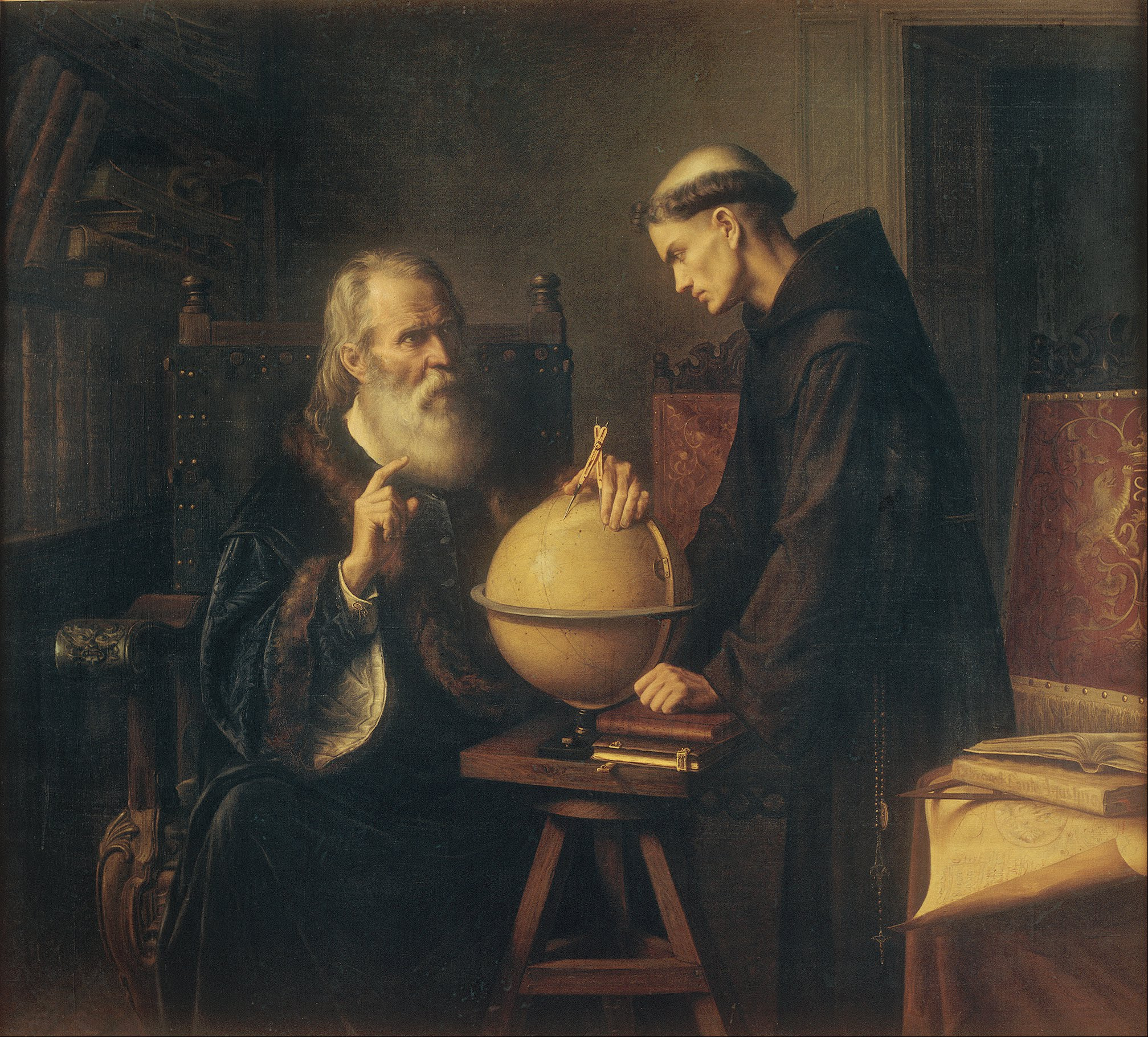
 In reading Galileo's work "Dialogue Concerning the Two Chief World Systems," I came across a part in the conversation that tugged at my imagination. Signore Salviati tells a story on the third day in which he observes the difference in the sunsets over two days:
In reading Galileo's work "Dialogue Concerning the Two Chief World Systems," I came across a part in the conversation that tugged at my imagination. Signore Salviati tells a story on the third day in which he observes the difference in the sunsets over two days:"This is a conclusive proof that it had commenced to move away from the tropic, yet the sun's return between the first and second observations surely did not amount to one second of arc along the horizon. Making the observation later with a fine telescope which would multiply the disc of the sun more than a thousandfold turned out to be [easy]." (Galileo, 5)
In this passage, two methods of observation are clearly contrasted--by eye and by telescope. Salviati remarks that his first observation (by eye) is "conclusive proof," but admits that it made hardly a second's worth of difference in the sunset. This makes me wonder how many people have observed the same phenomenon throughout history, how many people have observed any small phenomenon in the world and just written it off because there was no way to look in closer.
 The point here is that astronomy requires a deep analysis of very small and precise movements in the sky. Even Copernicus, who published a thoroughly detailed and relatively accurate piece on the workings of the solar system, would not come to be widely known until a century later because he didn't have the tools to prove his work. When Galileo explored these theories, his conclusions were more poignant because he was able to use the telescope to develop more powerful proofs. Technology allowed scientists to prove theories and therefore make a wider impact on society.
The point here is that astronomy requires a deep analysis of very small and precise movements in the sky. Even Copernicus, who published a thoroughly detailed and relatively accurate piece on the workings of the solar system, would not come to be widely known until a century later because he didn't have the tools to prove his work. When Galileo explored these theories, his conclusions were more poignant because he was able to use the telescope to develop more powerful proofs. Technology allowed scientists to prove theories and therefore make a wider impact on society.
Image credits: "Vilamendhoo island", Neville Wootton Photography, "Galileo Demonstrating the New Astronomical Theories", Felix Parra, "Conversations with God", Jan Matejko, all licensed by CC and labeled for noncommercial reuse.

I think your observation is interesting. I noticed a similar pattern in microbiology with the invention of a microscope. I wonder, though, if it is less of a linear relationship, and more of a cycle fueled by the Enlightenment mentality. Lots of amateurs with questions to ask and materials available saw what was needed in order to better answer those questions. They then developed the technology they needed, answered those questions, and then found new questions that needed answering.
ReplyDelete